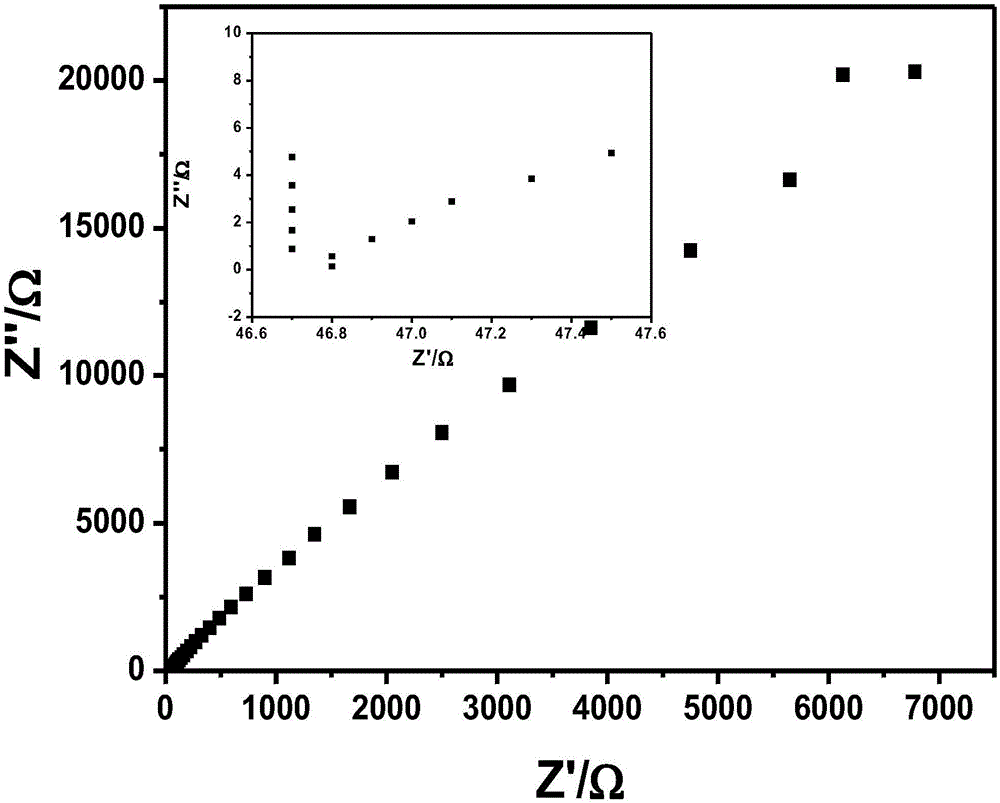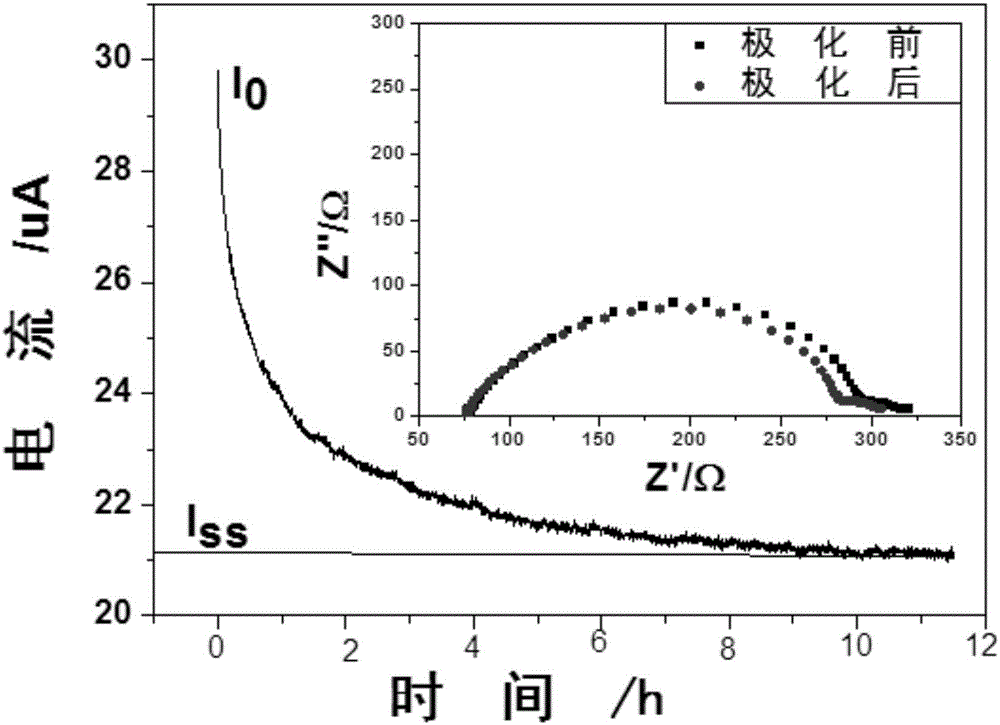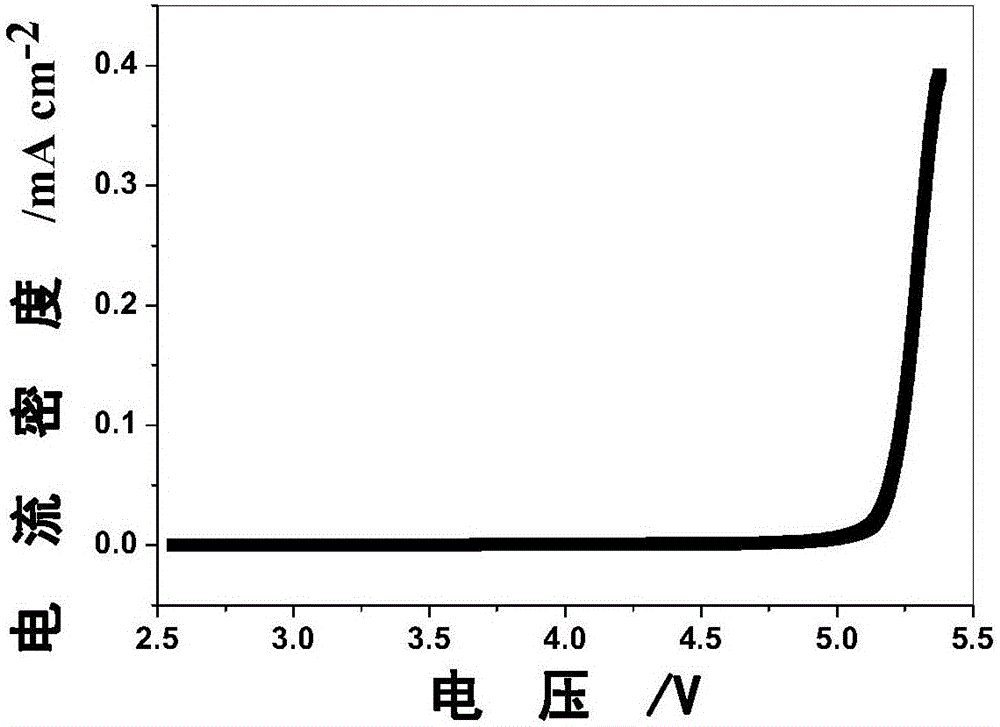Polymer electrolyte for lithium ion battery and preparation method
A lithium-ion battery and polymer technology, which is applied in the field of polymer electrolytes for new lithium-ion batteries, can solve problems such as uncontrollable curing time and curing degree, increased production process, and difficulty in mass production, and achieve stable electrochemical stability window and product The shrinkage rate is small and the effect of improving the stability of the interface
- Summary
- Abstract
- Description
- Claims
- Application Information
AI Technical Summary
Problems solved by technology
Method used
Image
Examples
Embodiment 1
[0024] 2.48g LiPF 6 Dissolve in 5ml of ethylene carbonate (EC) and propylene carbonate (PC) (V:V=1:1), stir at room temperature to dissolve completely. Add 3g of polypropylene oxide prepolymer of silane-terminated polyether to the electrolyte solution of lithium hexafluorophosphate, ethylene carbonate and propylene carbonate and stir evenly, and finally add 0.1g of dioctyltin dropwise instead of dibutyltin and stir evenly. On the polytetrafluoroethylene mold, with the cellulose film as the supporting framework, the uniformly stirred polymer electrolyte was scraped and coated on both sides of the cellulose film, and heated at 60°C for 6 hours in a drying oven to solidify to form a film.
Embodiment 2
[0026] 1.89g LiC(CF 3 SO 2 ) 3 Dissolve in 4ml of ethylene carbonate (EC) and tetraethylene glycol dimethyl ether (TEGDME) (V:V=1:1), stir at room temperature to dissolve completely. Add 3g polypropylene oxide prepolymer of silane-terminated polyether to the electrolyte solution of lithium hexafluorophosphate, ethylene carbonate and tetraethylene glycol dimethyl ether, stir evenly (indicate the viscosity number average molecular weight), and finally add 0.07g di Alkyltin mercaptide is stirred evenly. On the polytetrafluoroethylene mold, with non-woven fabric as the supporting framework, the uniformly stirred polymer electrolyte was scraped and coated on both sides of the cellulose membrane, and heated at 80°C for 4 hours in a drying oven to solidify to form a membrane.
Embodiment 3
[0028] 1.22g LiClO 4 Dissolve in 3ml of triethylene glycol dimethyl ether and tetraethylene glycol dimethyl ether (TEGDME) (V:V=1:1), stir at room temperature to dissolve completely. To the electrolyte solution of lithium perchlorate, triethylene glycol dimethyl ether and tetraethylene glycol dimethyl ether, add 2 g of polypropylene oxide prepolymer of silane-terminated polyether and stir evenly, and finally add 0.04 g of platinum water dropwise The catalyst is evenly stirred. On the polytetrafluoroethylene mold, with the cellulose film as the supporting framework, the uniformly stirred polymer electrolyte was scraped and coated on both sides of the cellulose film, and heated at 70°C for 4 hours in a drying oven to solidify to form a film.
PUM
 Login to View More
Login to View More Abstract
Description
Claims
Application Information
 Login to View More
Login to View More - R&D Engineer
- R&D Manager
- IP Professional
- Industry Leading Data Capabilities
- Powerful AI technology
- Patent DNA Extraction
Browse by: Latest US Patents, China's latest patents, Technical Efficacy Thesaurus, Application Domain, Technology Topic, Popular Technical Reports.
© 2024 PatSnap. All rights reserved.Legal|Privacy policy|Modern Slavery Act Transparency Statement|Sitemap|About US| Contact US: help@patsnap.com










